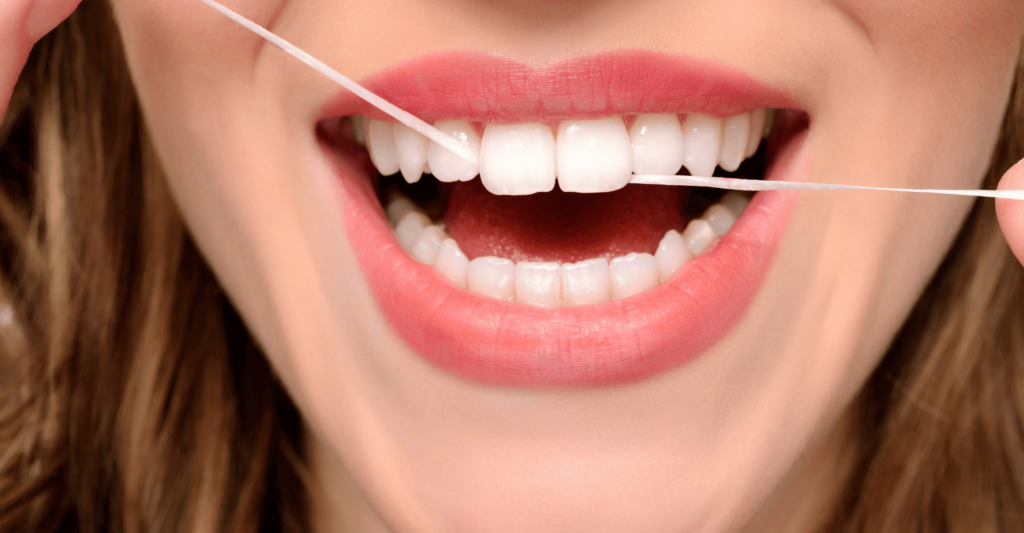
The Flossing Debate: Are You Doing It Right (or At All)?
Did you know that 32.4% of American adults never floss? The statistic was derived from a widespread study that scrutinized data from more than 9,000 people ages 30 and up, and it serves as a rude awakening for oral health lovers alike. The study says 37.3% of Americans floss less often than daily, with only 30.3% flossing daily. These statistics highlight the existing deficiency of oral hygiene habits while emphasizing the need for proper flossing techniques.
Flossing, a core component of oral care, is a hot topic in oral hygiene. Though proven beneficial, many people miss this critical step or use incorrect techniques without realizing it. In this article, you can learn what makes flossing matter, the mistakes people typically make, the proper techniques for effective flossing, and tips for making flossing a habit.
Why Flossing Matters
Flossing is an essential aspect of proper oral hygiene. Although a toothbrush is effective in removing plaque from the surface of your teeth, it has limited reach to the narrow gaps between your teeth or the area underneath the gumline. Enter flossing. Adding brushing and flossing to this routine helps ensure complete oral care. Now let’s understand brushing and flossing for oral health benefits:

Fresher Breath
Does brushing your teeth not make your breath feel fresh? Food stuck between teeth can go rotten, causing bad breath. Flossing clears away these flecks and leaves you with a minty-fresh grin and confidence to spare.
Healthier Gum
If you do not floss enough, plaque can begin to form, which can be irritating, leading to gum disease. Gum disease is marked by redness, bleeding, and, in advanced stages, loss of teeth. Flossing keeps plaque from building up and protects your gums from damage.
Brighter Smile
Over time, plaque can harden into tartar, which signifies an increased risk for dental problems and discoloration. This will help you prevent the buildup of tartar, which can cause tooth discoloration.
When you make flossing a priority, you’re not only caring for your oral health, but you’re also helping your body overall. Gum disease has also been associated with numerous systemic health issues, from heart disease to diabetes. So, flossing is good for much more than your mouth.
Common Flossing Mistakes
It is essential, and yet so many people have never flossed properly. Here are some mistakes to watch out for:
Not Flossing Regularly
Consistency is key. Occasionally, flossing is better than never, but daily flossing is best for oral health.
Using Improper Technique
Many people use a sawing motion that can damage the gums. Instead, for effective cleaning, a gentle up-and-down motion is best.
Snapping The Floss
Snapping the floss between your teeth can injure your gums and be painful. Take your time and be gentle.
Not Flossing To The Gumline
Plaque often lurks just beneath the gumline. Letting that area go unflossed puts your gums at risk for disease.
Flossing Too Forcefully
Aggressive flossing can injure your gums. It’s essential to be assertive but with kindness.
Missing Teeth
Some people only floss their front teeth and not their molars. Use floss or interdental cleaners between every tooth, even the back ones.
How To Floss Like Perfectly
Flossing can appear to be an essential practice, yet perfecting the correct practice for flossing is necessary for the best results. Below are some of the tips that you can follow to floss your teeths perfectly:

Select Floss
Floss comes in waxed and unwaxed, flavored, and tape varieties. Pick one that fits your preferences and needs. If traditional floss is not your jam, try floss/interdental cleaners, floss picks, or water flossers as safe alternatives.
For The Unwinding Of The Floss
Pull out around 18 inches of floss and wrap the ends around your middle fingers, leaving about 2-3 inches to work with. This length guarantees there’s enough floss to explore each tooth.
Gently Insert
Keeping the floss taut, carefully insert it between your teeth with a gentle back-and-forth motion. Do not snap the floss into your gums.
Crul The Floss
After flossing between teeth, curl floss into a C around one tooth. So move it up and down gently, remembering to get beneath the gumline.
Cleanse Each Side
Shift the floss to the next tooth and do the same. Be thorough but gentle to keep from irritating your gums.
Repeat
Use a new section of floss for each tooth. Continue until you’ve cleaned all your teeth, including the hard-to-reach molars.
Consider Alternatives
If traditional flossing seems like a chore, consider alternatives such as floss picks or water flossers. These flossing methods can make it easier to floss while also providing benefits similar to those of flossing teeth.
Tips for Making Flossing a Habit
Flossing can become an effortless part of your day. Here are some suggestions to help make it routine:
- Pair It With Brushing: To reinforce the habit, floss before or after you brush. Creating a routine will solidify flossing into second nature.
- Get Reminders: Set up an alarm on your phone or use a sticky note somewhere to remind you to floss. It will become habitual/repetitive over time.
- Have Floss Handy: Store floss in conspicuous spots beside your toothbrush or purse.
- Start Small: If you think flossing is too much to do every day, limit yourself to a few days a week and then increase the frequency.
Flossing Techniques For Every Lifestyle
Whether you stick to traditional floss, floss/interdental cleaners, or high-tech devices like water flossers, there’s a way for everyone to get in between cleaning. Try different options and see what best fits your lifestyle and comfort level. It doesn’t matter what tool you use: Consistency and proper technique are key.
Conclusion
Flossing is a low-investment, high-return activity for your oral and overall health. If you aren’t flossing regularly, work up to daily flossing in small increments. Remember that even flossing several times a week has a significant impact. If you question your flossing practice or need guidance, schedule your next cleaning with us. Dental Faith Nashville offers the best dental care services because we want to help you brush and floss to the best of your ability so that you can enjoy a healthier, brighter smile!
FAQs
Why is flossing no longer recommended?
Dental professionals still recommend flossing, but concerns about improper technique and a lack of evidence in some studies have sparked debate. Other experts say proper flossing is still essential for gum and oral health.
What does flossing do?
Flossing helps remove plaque and food particles from between teeth and beneath the gumline, areas that toothbrushes alone can’t reach. This helps prevent cavities, gum disease, and bad breath.
How do you floss correctly?
Take 18 inches of floss, gently slide it between your teeth, curve the floss around each tooth, and remove plaque below the gumline with an up-and-down motion. Not make any snapping or sawing motions.
Do I floss before or after brushing?
You can floss before or after brushing, but many health experts recommend flossing first to help dislodge debris that can make brushing less effective.
